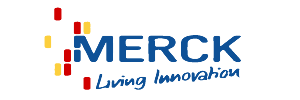Team:SJTU-BioX-Shanghai/Project
From 2014.igem.org
WELCOME TO iGEM 2014!Your team has been approved and you are ready to start the iGEM season!
|
||||||||||||
| ||||||||||||
Project Description |
Content |
|||||||||||
|
This year, we bring MembRing – an annular protein multimerization system in cytomembrane. This system will help us achieve the goal of selective polymerization of enzymes. Polymerized enzymes, different from normal scattered condition, has much more opportunities to contact with the substrates. Therefore, our project aims to increase as well as control the efficiency of complex reactions. The basic function, polymerization, is carried out by a circular DNA and DNA-binding protein to polymerize enzymes. First, a fluorescent protein, a transmembrane domain, an enzyme and a DNA binding protein are connected in order, forming a complex that the FP locates outside the film while the enzyme and DNA binding protein are in cytoplasm. Then integrate specific matching DNA sequences onto an exogenous plasmid and co-transform this connecter with expression vectors into E.Coli to associate enzymes. In addition, we plan to make the enzymes selectable by remolding the connecter with different recognition sequences and co-transforming it with expression vectors. This will help the whole project to work in all kinds of practical applications. ReferencesiGEM teams are encouraged to record references you use during the course of your research. They should be posted somewhere on your wiki so that judges and other visitors can see how you though about your project and what works inspired you. |
You can use these subtopics to further explain your project
It's important for teams to describe all the creativity that goes into an iGEM project, along with all the great ideas your team will come up with over the course of your work. It's also important to clearly describe your achievements so that judges will know what you tried to do and where you succeeded. Please write your project page such that what you achieved is easy to distinguish from what you attempted. |
|||||||||||
 "
"






